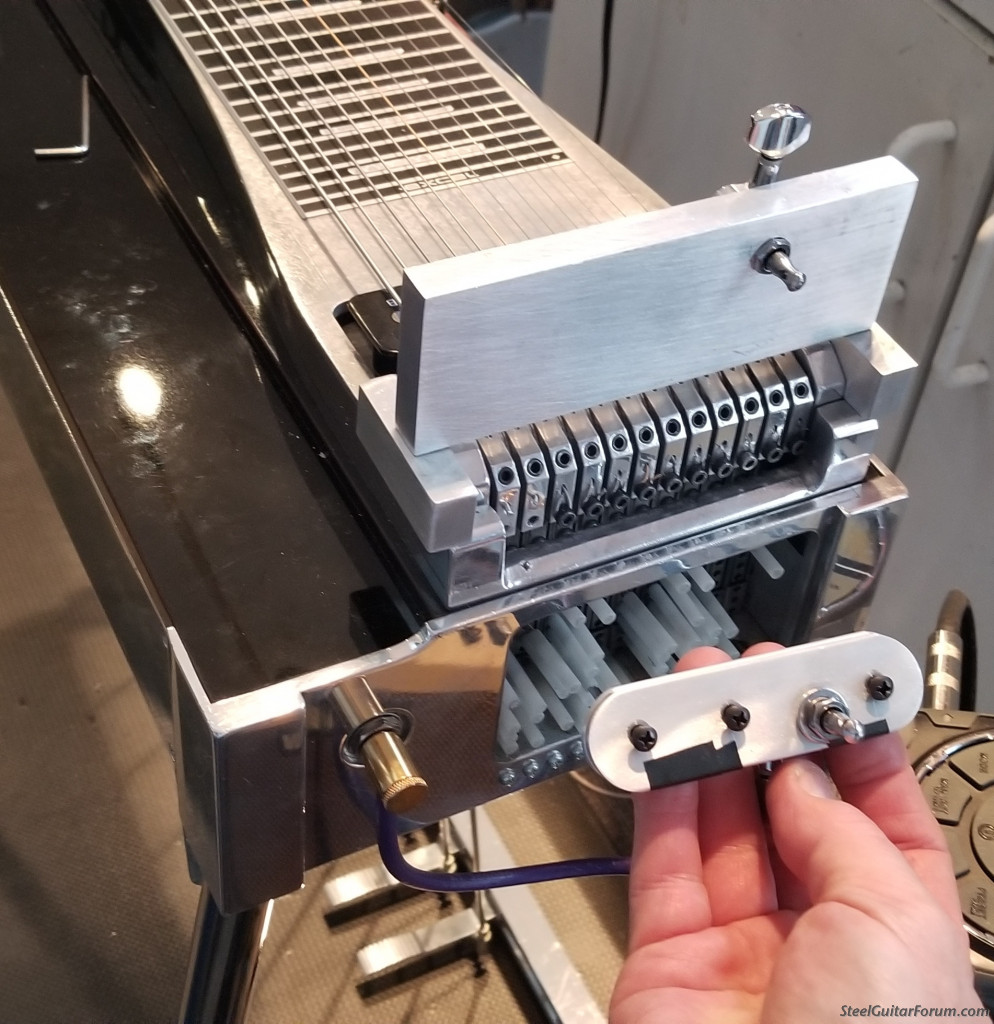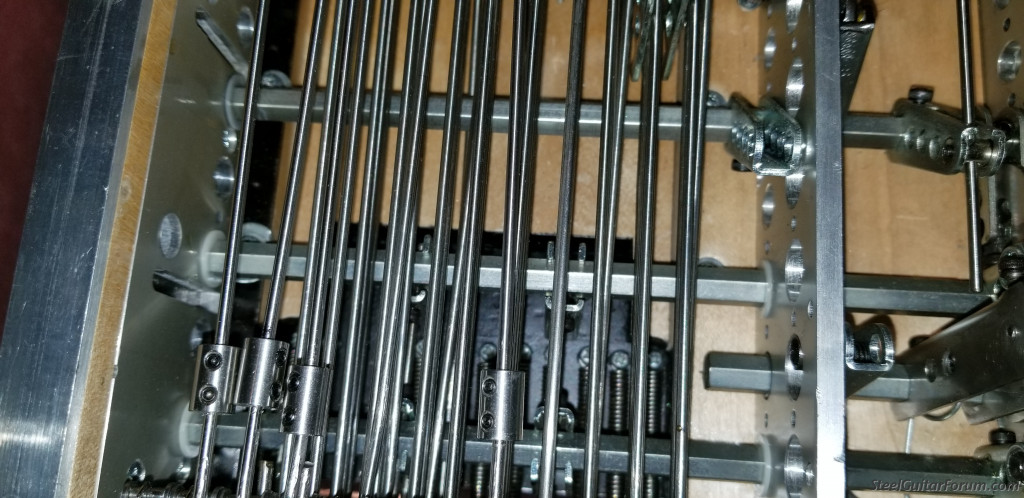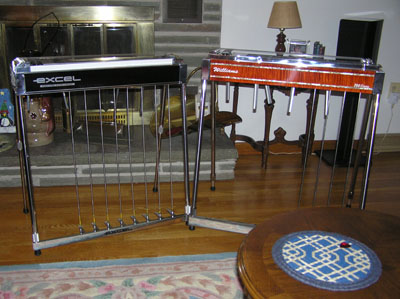FWIW, I have two (2) 12 string E9/C6 S-12 Superbs, one is a 2018, the other a 2008 model. Both have 8+7.
I know a thing or two about them, as I've had the undersides completely apart on both of them.
Dave Munson: I have tht exact guitar. I had problems on the 3rd string until I cleaned up a sharp edge inside the hole where the string ball goes, and started pre-stretching this string. The problem here is that if you don't pre-stretch the strings, you have to run the tuner so far that a sharp edge comes in contact with the string, and it breaks. I do still shield my eyes when tuning this one up! haha! I run a 0.011" string here.
John McClung:
The guitar has a regular axle, about which pivots the raise finger, executing a raise. The lower finger inside has an oblong hole about the axle, and actually rotates about a smaller pin (that pins the raise and lower finger together) that's just below the main axle. The lower finger looks like it's sliding forward, but really, it's rotating about a point below the main axle. Kind of hard to explain, but pretty simple once you see it.
They are east to work on as any guitar, maybe even easier. Nothing attached to the body deck, but all attached to the drilled rail system.
Let me see if I can post some pics: These are my 2018 S-12 E9/C6. It's super busy, but it works perfectly. Amazing really.



This last photo you can see the lower pivot below the axle hole.













